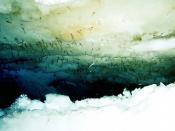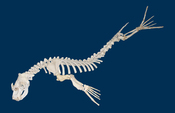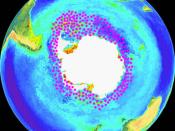All animal and plant life in Antarctica live around the edges of the continent and in its ocean. The vast mass of ice, fierce winds and extreme cold makes it impossible to live in the interior of Antarctica. In winter Antarctica is in darkness and the surface of the ocean freezes and many of the animals leave Antarctica. Most of the small sea life, such as Krill, moves to places where the water temperature is more stable. Animals that eat Krill either change their diet or follow the Krill's movement. The only warm blooded animal that remains in Antarctica throughout the winter is the Emperor Penguin.
To survive in the Antarctic winter, life has evolved and adapted to this environment. Plants such as algae, lichen and mosses can be found beneath an insulating layer of snow or in cracks in rocks which provide the plants shelter, light, warmth and moisture.
Whales, seals and penguins have developed a thick layer of fat under their skins to protect them from the cold. Some fish contain antifreeze in their body. Many warm blooded animals conserve their energy so they can keep their body heat stable.
In spring and summer Antarctica is full of life. There is a lot feeding and breeding during this period of the year. Birds make their nests and tend to their eggs and chicks. Seals have their pups on either the sea ice, ice shelves or on the coast. There is also a massive growth in microscopic life that provides the energy Antarctica life depends on.
Some animals in Antarctica
Krill
There are about 85 species of Krill. Adult Antarctic Krill are approximately 6 centimetres in length and weigh just over a gram. Krill swim together in massive pack that can be hundreds of metres across and up to...


